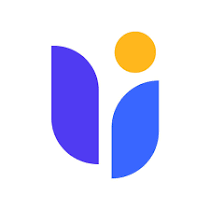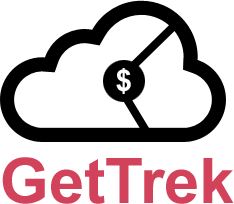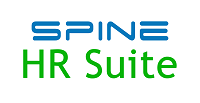Description

OrangeHRM

PiHR
Comprehensive Overview: OrangeHRM vs PiHR
OrangeHRM and PiHR are human resource management systems (HRMS) that provide solutions to streamline HR processes for organizations. Here's a comprehensive overview of both:
OrangeHRM
a) Primary Functions and Target Markets
Primary Functions:
- Core HR: Manages employee information, documents, and administrative tasks.
- Recruitment: Provides tools for job postings, application tracking, and managing candidate information.
- Performance Management: Facilitates performance appraisals, feedback, and setting employee goals.
- Time and Attendance Management: Tracks employee attendance, leave management, clock-in and clock-out services.
- Payroll: Offers payroll processing and management features, although this is more integrated in certain regions or based on the plan.
- Training and Development: Manages employee training records and development plans.
Target Markets: OrangeHRM targets small to mid-sized businesses across various industries. It is especially popular with companies looking for a cost-effective, open-source option that can be customized to meet specific business needs.
b) Market Share and User Base
OrangeHRM is one of the most popular open-source HRM systems available, with millions of downloads worldwide and active users across over 100 countries. While precise market share figures can vary, its open-source model has contributed to widespread adoption, particularly among small and medium-sized enterprises (SMEs).
PiHR
a) Primary Functions and Target Markets
Primary Functions:
- Employee Management: Centralized employee database for easy information management.
- Time Tracking: Simplified tools for managing work hours, shifts, and absenteeism.
- Payroll Management: Integrated payroll features to automate salary computations and compliance.
- Recruitment: Streamlines the recruitment process with applicant tracking and job listing capabilities.
- Performance Appraisal: Tools for evaluating employee performance and feedback mechanisms.
Target Markets: PiHR is tailored to small and medium-sized enterprises (SMEs), particularly those seeking affordability and simplicity in HR operations. It aims to provide intuitive solutions to businesses that need a straightforward HR tool without extensive customization.
b) Market Share and User Base
PiHR, while growing in presence, does not have the extensive global footprint of OrangeHRM. It is more localized and may have stronger penetration in specific regions where it originated or markets it has specifically targeted. The user base is smaller compared to OrangeHRM, focusing on SMEs looking for cost-effective and easy-to-use HR solutions.
c) Key Differentiating Factors
-
Open Source vs. Proprietary: OrangeHRM is known for its open-source model, offering businesses flexibility and versatility in customizing their HR solutions, whereas PiHR is typically a proprietary system focusing on ease of use and straightforward functionality.
-
Customization and Scalability: OrangeHRM offers extensive customization options, allowing businesses to tailor the system to their unique needs. PiHR, on the other hand, emphasizes simplicity and ease of integration with potentially less flexibility in customization.
-
Global Reach vs. Local Focus: OrangeHRM has a broader international reach due to its long-standing presence and open-source nature, which has facilitated adoption across various regions. PiHR, however, may concentrate efforts in specific regional markets, providing features that are more aligned with local business practices.
-
Complexity and Feature Set: OrangeHRM provides a more comprehensive feature set with modules covering various aspects of HR management, appealing to businesses looking for a complete HR suite. PiHR tends to focus on core HR functionalities, appealing to organizations that prefer simplicity over complexity.
In summary, both OrangeHRM and PiHR offer valuable HR solutions to SMEs, but they differ in their approach—OrangeHRM provides a versatile and globally oriented platform, while PiHR offers simplicity and affordability aimed at smaller businesses or specific market regions. Organizations would choose between these products based on factors like customization needs, budget, and geographical focus.
Contact Info

Year founded :
2006
+1 914-458-4254
Not Available
United States
http://www.linkedin.com/company/orangehrm

Year founded :
Not Available
+880 1713-428432
Not Available
Bangladesh
http://www.linkedin.com/company/pihrsoftware
Feature Similarity Breakdown: OrangeHRM, PiHR
When comparing OrangeHRM and PiHR, two popular HR management solutions, we can break down their features and user interfaces as follows:
a) Core Features in Common
-
Employee Management: Both platforms offer robust tools for managing employee data, including personal details, job information, and organizational hierarchies.
-
Leave Management: A comprehensive leave management system is included in both, allowing employees to apply for leave and managers to approve or deny requests easily.
-
Time and Attendance: Both platforms provide tools for tracking employee attendance, shifts, and work hours, with integration options for timesheets.
-
Performance Management: Performance appraisal features are available in both, enabling regular performance reviews, goal setting, and feedback mechanisms.
-
Recruitment: They offer applicant tracking systems (ATS) to facilitate recruitment processes, including job posting, application tracking, and candidate management.
-
Reporting and Analytics: Both provide a suite of reporting tools to generate insights from HR data, although the depth and customizability might vary.
-
Payroll Integration: Each platform provides features to integrate with or support payroll operations, although the extent and specific integrations may differ.
b) User Interface Comparison
-
OrangeHRM has a UI that is known for being modular and customizable. It typically offers a clean, professional, and user-friendly interface with dashboards that provide a quick overview of key HR metrics. The enterprise version, in particular, allows for customization to match company branding, and the layout is intuitive for general HR tasks.
-
PiHR, on the other hand, generally provides a more streamlined, modern interface with easy navigation aimed at enhancing user experience. Its design is often more minimalistic, focusing on ease of use, with icons and layouts that facilitate quick access to frequent operations.
The key difference often lies in the degree of customization and the aesthetic style. OrangeHRM might offer more flexibility for large enterprises needing detailed custom setups, while PiHR could appeal more to SMEs looking for simplicity and efficiency.
c) Unique Features
OrangeHRM:
-
Open Source Flexibility: One of OrangeHRM’s standout features is its open-source version, which allows businesses to customize the software extensively to fit their specific needs. This flexibility makes it a favorite for companies with unique HR requirements and technical capabilities.
-
Advanced HR Modules: OrangeHRM includes specialized modules like disciplinary tracking and travel management, which may appeal to businesses with specific compliance and operational needs.
PiHR:
-
AI-Powered Insights: Some versions of PiHR incorporate AI-driven analytics to provide predictive insights, which help in strategic decision-making.
-
Built-in Employee Engagement Tools: PiHR often includes integrated tools for employee feedback and engagement, such as surveys and pulse checks, which are designed to actively improve workplace satisfaction and productivity.
Both systems have their strengths, and the choice between them may depend on specific business needs, the desired level of customization, and the company size.
Features

Not Available

Not Available
Best Fit Use Cases: OrangeHRM, PiHR
OrangeHRM and PiHR are both human resource management systems (HRMS) designed to streamline HR processes, but they cater to different business needs and scenarios. Let's explore the best fit use cases for each:
OrangeHRM
a) For what types of businesses or projects is OrangeHRM the best choice?
-
Small to Medium-Sized Enterprises (SMEs): OrangeHRM is particularly well-suited for small to medium-sized businesses that need a comprehensive HR solution without the complexity and cost of a large-scale enterprise system.
-
Companies with Limited HR Resources: It is ideal for organizations that do not have a large HR department and need an intuitive system to manage key HR functions like leave management, recruitment, and performance reviews.
-
Global Operations: OrangeHRM offers multi-language support and can handle the complexities of multinational operations, making it suitable for businesses that operate in multiple countries.
-
Organizations Seeking Customization: It offers flexibility and customization to fit specific needs, which is great for businesses that require tailored HR solutions.
PiHR
b) In what scenarios would PiHR be the preferred option?
-
Startups and Growing Small Businesses: PiHR is often chosen by startups and small businesses that are in the growth phase and need a scalable solution that can grow with them.
-
Cost-Conscious Companies: PiHR is known for being cost-effective, which makes it attractive for companies on a tight budget that need robust HR functionalities without significant investment.
-
Businesses Requiring Quick Implementation: Its user-friendly interface and straightforward setup process make PiHR an appealing choice for businesses that need to deploy an HR system quickly and efficiently.
-
Organizations Focusing on Core HR Functions: Companies that mainly need core HR functionalities like attendance tracking, payroll, and employee database management may find PiHR to be a highly effective option.
Catering to Different Industry Verticals or Company Sizes
d) How do these products cater to different industry verticals or company sizes?
-
Industry Verticals: Both OrangeHRM and PiHR provide modules and features that can be tailored to different industries, such as healthcare, retail, manufacturing, and IT services. They offer functionalities that are versatile enough to meet specific needs such as compliance management, time tracking for shift workers, and specialized dashboards for managerial overview.
-
Company Sizes:
-
OrangeHRM is more adaptable to mid-market firms and larger enterprises due to its customizable features and ability to support complex HR processes required by bigger organizations. Its open-source nature also appeals to companies that prefer a hands-on approach to tailoring their HR management system.
-
PiHR usually attracts smaller companies and startups that prioritize quick setup and straightforward functionalities. Its scalability ensures that as these businesses grow, the HR system can evolve to accommodate increased demands without needing a complete overhaul.
-
Both OrangeHRM and PiHR have their strengths, making them suitable for different types of businesses and responding to varying organizational needs across industry sectors.
Pricing

Pricing Not Available

Pricing Not Available
Metrics History
Metrics History
Comparing teamSize across companies
Conclusion & Final Verdict: OrangeHRM vs PiHR
Conclusion and Final Verdict for OrangeHRM and PiHR
After evaluating OrangeHRM and PiHR, several factors such as features, pricing, scalability, user experience, and customer support come into play when deciding which product offers the best overall value.
a) Best Overall Value
OrangeHRM tends to offer the best overall value, particularly for small to medium-sized businesses seeking a comprehensive, scalable Human Resource Management System (HRMS) with robust features and flexibility. Its open-source model allows companies to customize the platform extensively, which is a significant advantage for users needing tailored solutions. It offers a community version for free, which can be upgraded to paid plans with more extensive features.
PiHR, however, may offer better value for companies seeking simplicity and ease of use with great customer support, as it is often more user-friendly and comes with a visually intuitive interface, although it might not be as richly featured or as customizable as OrangeHRM.
b) Pros and Cons
OrangeHRM Pros:
- Customization: Highly customizable, particularly the open-source version.
- Community Support: Strong community support and extensive documentation.
- Feature-Rich: Offers a wide range of modules like leave management, time tracking, and performance management.
- Cost-Effective: The free version provides adequate features for small businesses.
OrangeHRM Cons:
- Complexity: May have a steeper learning curve. Customization requires technical expertise.
- Support Cost: Premium support could be costly unless you opt for higher-tier paid packages.
PiHR Pros:
- User-Friendly: Simple and intuitive interface, making it easy for users with limited technical knowledge.
- Customer Support: Generally known for responsive customer support.
- Integration: Good integration capabilities with other business tools.
PiHR Cons:
- Limited Customization: Less flexibility in terms of customization compared to OrangeHRM.
- Feature Limitations: May lack some advanced features available in other HRM systems.
c) Recommendations
-
For Customization Needs: If your organization requires tailored HR solutions with specific workflows and processes, OrangeHRM would be the preferred choice, given its flexibility and extensibility. However, this may require an IT team for deployment and maintenance.
-
For Simplicity and Quick Setup: PiHR would be more suitable if you prioritize ease of setup and use, and you want to minimize the need for extensive IT resources. It’s ideal for companies looking for a straightforward solution with adequate support.
-
Budget Considerations: For organizations with limited budgets, starting with OrangeHRM’s community version can be beneficial as it is free. For budget flexibility with a priority on user experience, PiHR offers straightforward, predictable pricing.
-
Long-Term Scalability: If you foresee scaling up rapidly and require an HRM system that can grow with your organization in terms of complexity, OrangeHRM might provide better investment value over time.
Ultimately, the choice between OrangeHRM and PiHR should be based on your specific organizational needs, budget, and the level of customization and support your team requires. Conducting a trial run of both systems could also provide valuable insights into which platform best fits your workflows and readiness for future growth.
Add to compare
Add similar companies




